A Complete Guide to Project Management Methodologies
Edraw Content Team
Looking to become a Project Manager?
EdrawMind helps move ideas forward, faster and better. Learn from this Project Management complete guide to know everything about it. Just try it free now!
In today's fast-pacing, technologically driven IT world, business owners or managers do not prefer to stick with one single project management methodology to understand the flow and illustrate the nature of their business. At the same time, to become a project manager, you must understand different types of project management methodologies. In this guide, we will help you understand different elements that help you choose the right project management methodology, and we will introduce you to all the important project management methodology tools, like Agile, Waterfall, Scrum, and more.
This project management methodology guide will also help you understand different types of frameworks and how EdrawMind lets you create all the types of different project management methodologies for your business.
1. What is a Project Management Methodology?
In any company or a project's delivery cycle, a project management methodology is considered a set of principles or ideologies that guide a project manager within a company to ensure that the client's demands are matched perfectly. In simpler words, a project management methodology is a system of techniques, procedures, and principles that helps outline different deliverables and workflows and even helps in understanding how the entire project will be delivered to the client.
One might ask why there are so many project management methodologies in the first place? The primary reason behind this is that not every methodology can cover all sorts of business modules, and for this, a project manager needs to rely upon different elements and components that influence internal and external factors.
Understanding Project Management Framework
It should be noted here that a project management framework mostly consists of processes, tasks, and tools used to take a project from A to Z or from start to finish. At the same time, a project management framework helps the client understand how the organization intends to fulfill their demands while ensuring that post-deliverables are also met. A business analyst or a project manager can split the project management framework into three major parts:
- Project Life Cycle: This is the most important phase as it illustrates how the entire project will go through from beginning to end.
- Project Control Cycle: In this cycle, the project manager will monitor and control the project's life cycle process.
- Tools & Templates: It consists of important tools, like project plans, project reports, risk assessment tools, risk logs, etc.
In most cases, business analysts often get confused between project management methodology and a project management framework. In the following table, we have tried to help you understand the crucial difference between the two.
Project Management Methodology
-
It comes with a set of principles that needs to be followed as it is in order to complete the project.
-
All the important project management methodologies are pretty rigid in nature, and a project manager will have to follow the same practices as mentioned in the guidelines.
-
Project Management Methodologies are preferred by those who are beginners and are learning the project's lifecycle.
-
Even though there are several methodologies, one cannot embed them with other project-related practices.
Project Management Framework
-
A framework generally provides an overview of how different project-related guidelines can be implemented to improve efficiency.
-
When working with a project management framework, a business analyst or a project manager can use and implement their own ideas.
-
If one has spent several years as a project manager, then one will opt for a framework to ensure the timely delivery of the entire project.
-
The framework allows project managers to include other practices and tools to improve the project's efficiency.
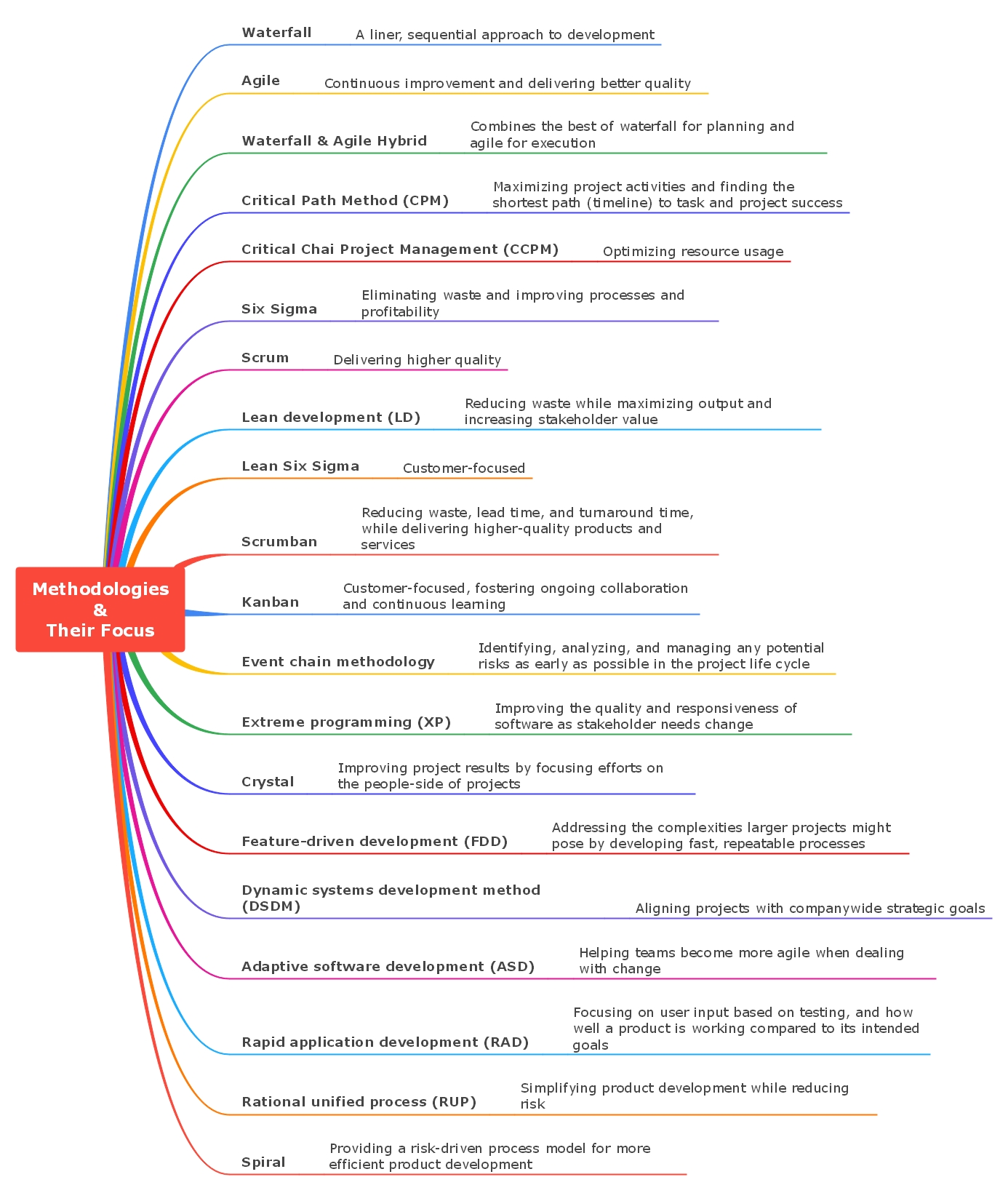
2. How to choose the right project management methodology?
When working on a project, you will come across different factors that will have a major impact on which project management methodology you should choose. It might be a possibility that for project-A, you might go ahead with Agile, but within the same company, you will choose Scrum for project B. Here is a quick understanding of some of the key elements that influence your decision in choosing the right project management methodology for your project:
- Cost & Budget: Allocated money to that particular project plays a huge role in choosing the right methodology. You can choose a simple methodology if you have limited resources but can opt for Kanban or Scrum if you have a talented staff..
- Team Size: If you have a limited number of employees assigned to a particular project, you might prefer to go ahead with basic methodologies. Nevertheless, if you have a large team size consisting of developers, graphic designers, stakeholders, and more, you can try different methodologies.
- Risk Factors: If the client's requirements are a bit complex, you should go ahead with a more complex methodology, with the chances of errors slim to none.
- Complaisance: If the client is going to change any requirement in-between the project, then your methodology should be equipped to handle such immediate changes.
- Deadline: Delivery time is yet another element that influences your decision to choose the right methodology.
- Mutual Collaboration: If you need to have transparent communication with your client, then choose a methodology that meets such needs.
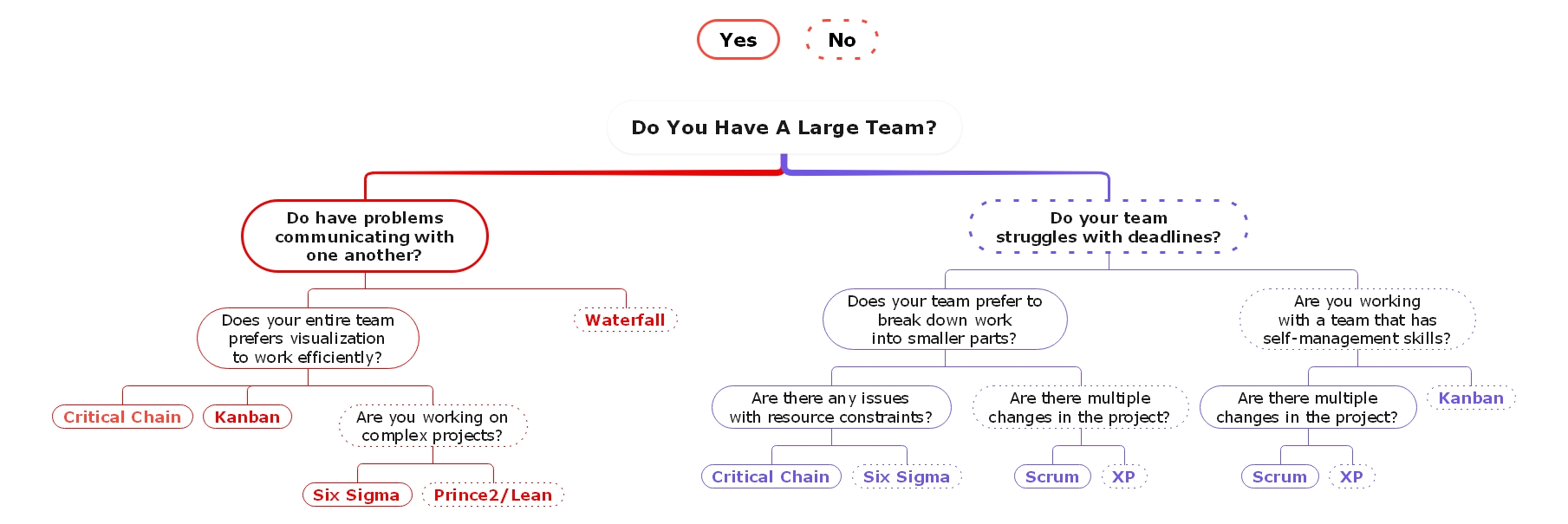
3. Top 12 Project Management Methodologies

1 Agile
Agile is one of the oldest and most-used project management methodologies in the market. It was created for those projects that required flexibility and had a very swift turnaround time. In all cases, Agile methodology is focused on providing an improvement on each step of a project's life cycle.
As a project manager, you will break down the entire project into multiple smaller parts or "sprints" that you deliver to the client on a pre-decided rule. If there are any changes, one can easily refer to those sprints without affecting the overall deliverables.
Use it if
-
The requirements of your project are bound to change or update shortly.
-
As a team manager, you are unsure what the final product or outset solution will look like.
Do not Use it if
-
Your team keeps on bringing new members, resulting in an extra workload to create multiple documentation sets.
-
The stakeholder or the client has asked for a predictable delivery from all fronts.
2 Waterfall
Waterfall is yet another traditional project management methodology. Unlike Agile, where we create sprints, in Waterfall, we have static phases, like Requirement Analysis, Design, Testing, Implementation, and Maintenance. As a project manager, all these phases are executed in a linear order.
Since every stage can have these different phases in the Waterfall methodology, it allows the business analysts to control each phase properly. That being said, the major downfall of using a Waterfall methodology is that it can become highly inflexible if the client keeps on changing the project's requirements.
Use it if
-
Your entire team, including your client or stakeholder, is well aware of the end goal of the project's life cycle.
-
The requirements of your project are clearly mentioned in the initial meetings and are not going to change, at least not before the delivery of the first draft.
Do not Use it if
-
The client might change the requirements in between the delivery of the project.
-
Use it if you need feedback on every stage to improve the overall performance.
Waterfall Template

(For Win)
(For Mac)
(For Linux)
3 Scrum
Scrum project management methodology is named after a famous formation in the game of rugby. In the sports, at least eight players from each side stand in a particular order -- the front row will have two props, a loosehead and a tighthead, and a hooker; the second row will have two locks, and the back row will have two flankers.
Like the rugby game, a scrum team passes work quickly from one person to another, as there is no place on a Scrum team for a person responsible for all the major tasks. When a company follows Scrum project management methodology, they ensure that they are a cross-functional group where everyone knows how to delegate their work to the other person.
Use it if
-
Your team works towards the ultimate goal, where everyone wishes to improve their performance.
-
Your team and stakeholders understand that the only way to succeed is to delegate the work to all the responsible personnel.
Do not Use it if
-
As a business manager, you do not have full trust in your team members.
-
There is a huge communication gap between the team members, which results in unnecessary issues while working on such projects that require a higher production level.
Scrum Template

(For Win)
(For Mac)
(For Linux)
4 Kanban
A Kanban project management methodology focuses on ongoing mutual collaboration between different team members and the clients or stakeholders. These mutual collaborations create an environment of continuous learning and improving the overall project.
When a company works on a Kanban project management methodology, they usually create a Kanban visual board to help all the team members see tasks completed, in progress by other team members, and outstanding. A Kanban activity, in general, carefully balances work in progress by visualizing them as a daily task so the team can easily work on backlogs.
Use it if
-
With the help of boards, you require a visual representation of the entire project's progress.
-
By implementing work-in-progress limits, you need to encourage your team members and the client.
Do not Use it if
-
The project is extremely complex, and converting it into graphics will require additional resources and time.
-
Your project requires a push system instead of a pull system that the Kanban methodology offers.
Kanban Template
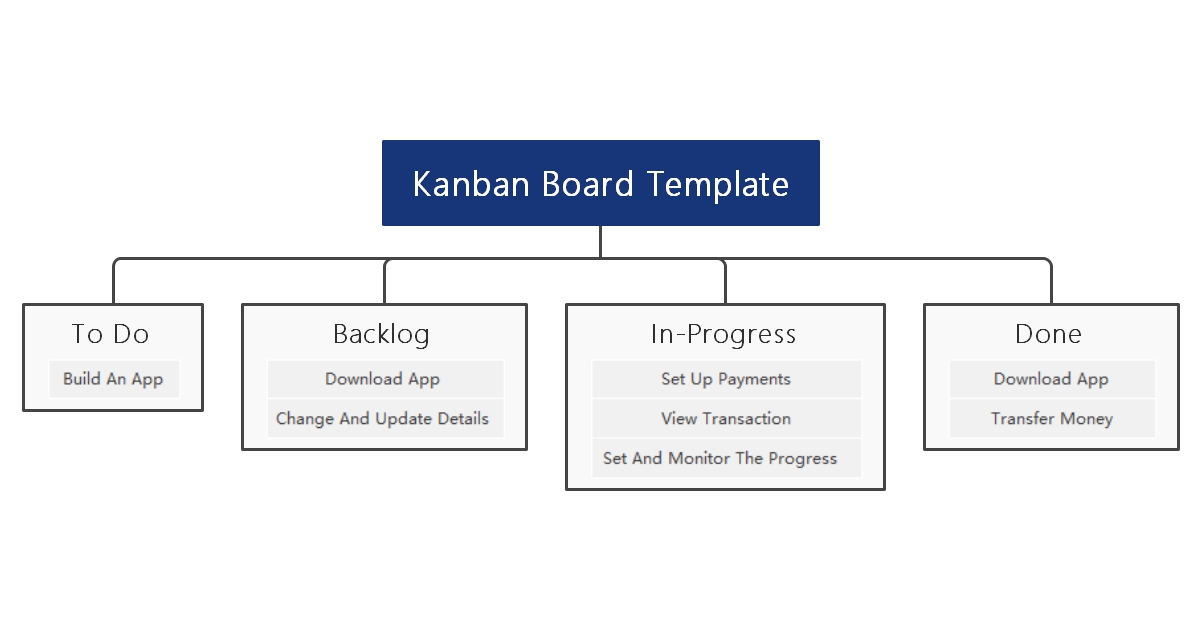
(For Win)
(For Mac)
(For Linux)
5 Scrumban
A Scrumban project management framework is an Agile methodology created by merging the best elements of Scrum and Kanban. In Scrumban, the team uses different story points to measure how much effort each of the user stories will require in order to complete a task.
When a company follows Scrumban, they ensure that all the tasks within the specific project are pulled into the doing column when the team is set to execute them correctly. Even though Scrumban is based on Agile methodology, there are no 'Sprints' per se, as this framework works on-demand planning.
Use it if
-
If you are impressed with the functionalities of both Scrum and Kanban methodology.
-
You have a full commitment from your team, who prefers to have a visual breakdown of the entire project.
Do not Use it if
-
Your team prefers to follow one method over a hybrid methodology.
6 PRINCE2
Projects IN Controlled Environments (PRINCE2) helps the team by describing every aspect of the project management in the most detailed manner. When a team follows the PRINCE2 methodology, they do not skip on any information presented to them by the stakeholders or the development team.
A PRINCE2 project management methodology addresses all the common reasons that lead to the failure of a project by outlining every way to keep the project easily organized by accessing all the available resources. When a team is finalized to go ahead with the PRINCE2 project management methodology, they ensure that they will manage the entire project in pre-planned and controlled stages.
Use it if
-
You and your client are working from the UK, where most governance bodies prefer to use PRINCE2.
-
Your team tends to prefer to follow all the guidelines in detail.
Do not Use it if
-
You or your stakeholder do not prefer to commit to any full certification for any project.
-
The seven important steps do not map around your project or company's requirements.
PRINCE2 Template
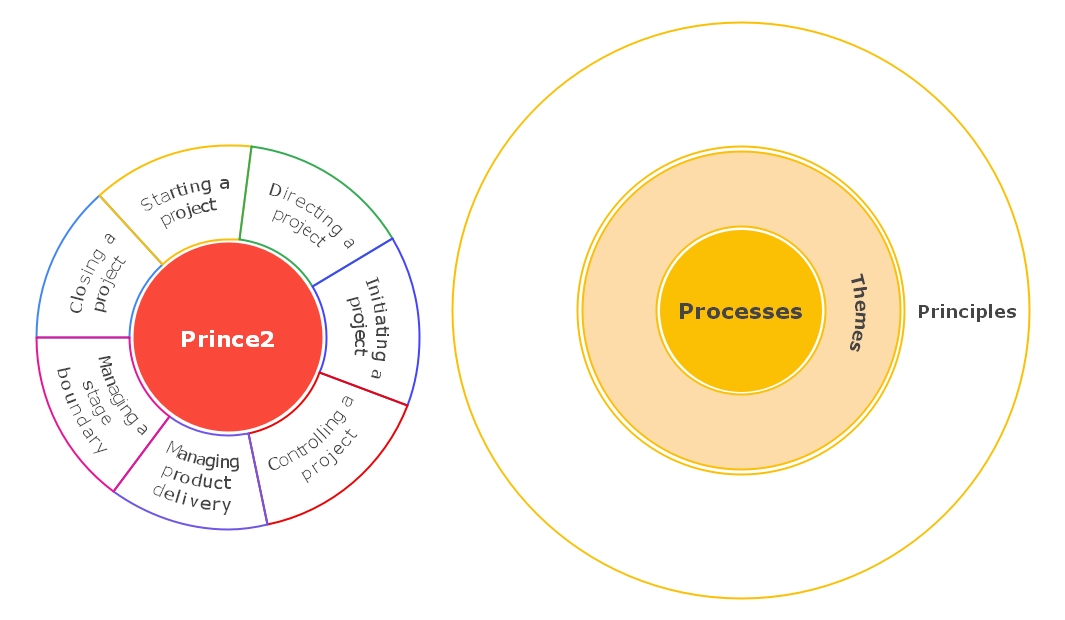
(For Win)
(For Mac)
(For Linux)
7 Six Sigma
Six Sigma was originally developed to eliminate waste and improve overall processes that lead to profit. A six-sigma project management methodology is data-driven, which means that it performs when the team provides enough data or information to it. In any project, it works around three major components, which are:
- Six Sigma was originally developed to eliminate waste and improve overall processes that lead to profit. A six-sigma project management methodology is data-driven, which means that it performs when the team provides enough data or information to it. In any project, it works around three major components, which are:
- DMAIC: Define, Measure, Analyze, Improve, & Control
- DMADV: Define, Measure, Analyze, Design, & Verify
- DFSS: Design for Six Sigma
Most project managers do not follow Six Sigma when they deal with such clients or projects that require additional touch. As we saw above, the six-sigma project management methodology has predefined components, which hinders creativity and sometimes leads to delays in delivering projects.
Use it if
-
You believe in taking forward the philosophies about project management.
-
You and your entire team love to work with the provided data and gathered information.
Do not Use it if
-
You have not allocated a humongous budget for training your employees about the rules laid out by Six Sigma methods.
-
You do not prefer to work around defined processes for any project's lifecycle.
8 Critical Path Method (CPM)
Critical Path Method, or CPM, is a project management methodology that is used for those projects that have interdependent activities. A CPM goes through different stages to look for the shortest path to complete a given task by creating a work breakdown structure. A CPM creates two activities based on which activities are critical and which are not. It further determines the longest and shortest path that needs to be taken to complete the project.
In simpler words, a CPM creates a critical path that consists of the longest sequence of activities that must be finished on time in order for the entire project to run smoothly. For example, creating the home screen and the flash screen in a mobile application might be considered the noncritical stage, but developing the system's backend is the most critical stage, and the team needs to complete it on time as other activities are solely dependent upon it.
Use it if
-
Your project delivery is large and complex.
-
Many verticals influence the overall performance of your project.
Do not Use it if
-
Your team, including your development team and the stakeholders, prefers to work with methods that do not bring many complexities.
-
Your entire team is not sure about the prospective deadlines.
9 Critical Chain Project Management (CCPM)
Unlike CPM, Critical Chain Project Management, or CCPM, is a project management methodology that helps business analysts to monitor essential resources within a project. By analyzing the essential resources, the analysts then prioritize important tasks to ensure the timely delivery of the projects.
When a product delivery team works on a CCPM framework, they create small buffers to ensure that every part of the project's life cycle is on time while maintaining that the efficiency and safety of the project are not compromised. It should be noted here that, unlike the critical path method, the critical chain project method finalizes the project's success by understanding how quickly these buffers are consumed.
Use it if
-
The concept of creating and analyzing buffers excites your team.
-
After working on a critical path method, you must have learned that you need something more solid when it comes to understanding and delivering on the client's requirements.
Do not Use it if
-
You do not take full advantage of small buffers.
-
Your team is unwilling to take any risk for this particular project.
Critical Chain Project Management (CCPM) Template
.jpg)
(For Win)
(For Mac)
(For Linux)
10 Lean Development
Lean project management methodology was first created for the automobile industry, where the primary focus was to find a way to reduce waste while ensuring that the stakeholder's value within the company increases three-fold. As you will learn, a Lean Development method works around seven key elements or principles: Reduce Waste, Improve Quality, Share Knowledge, Continuous Improvement, Faster Turnaround, and Remove Silos (Silos are considered that methodology where one team does not share complete information with the other team members), and Respect each other.
By implementing these seven key principles, several companies have seen that they have stopped wasting their resources on unnecessary delays, resulting in a sudden rise in stakeholders' values.
Use it if
-
Your company prefers to follow the guidelines that ensure timely delivery.
-
Your entire team always tries to improve the project's lifecycle.
Do not Use it if
-
You do not prefer to have any errors before or after delivering the project.
-
You do not have a specific budget to implement lean development.
Lean Development Template
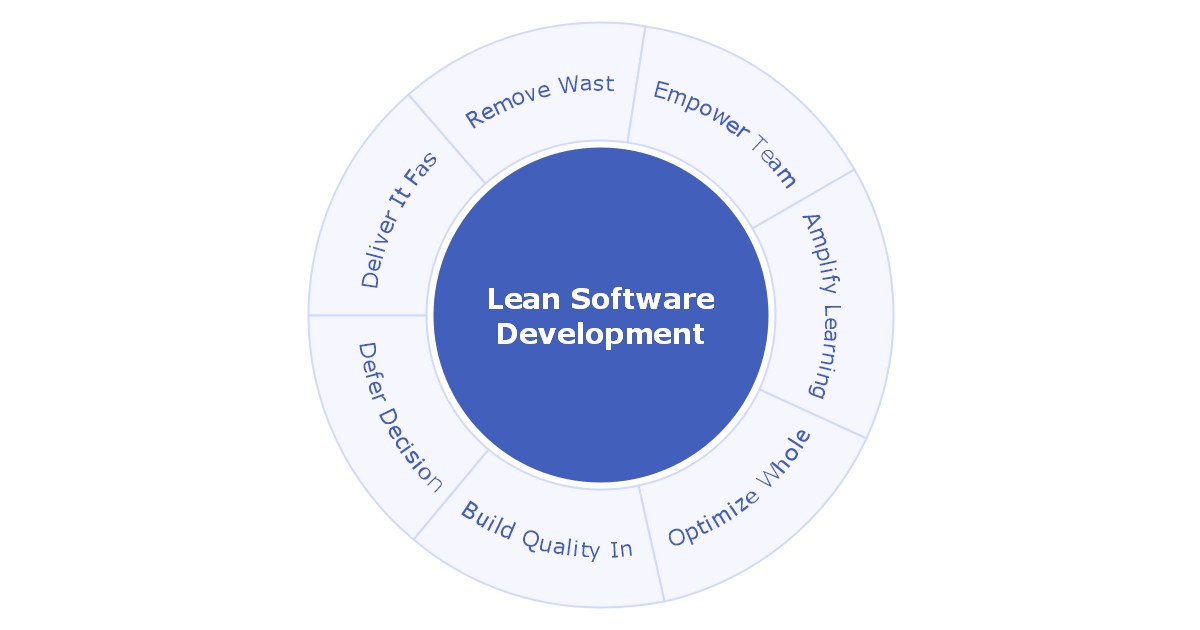
(For Win)
(For Mac)
(For Linux)
11 PMBOK
Before discussing PMBOK or Project Management Body of Knowledge, we should understand that this is not a project management methodology like Agile or Scrum. Rather, PMBOK is a framework that provides guidelines to business specialists to follow best practices, conventions, terminologies, and other information that are universally accepted within the project management community worldwide.
The Project Management Institute refers to the fives process: Initiating, Planning, Executing, Controlling, and Closing. When your company adopts the general foundations of the PMBOK for your specific project, you should first consider how your entire organization is formed or what is the preferred workflow within the institute.
Use it if
-
You already have a project management professional in your team who knows all the best practices that are followed everywhere.
-
Your client prefers that the project your team works on for them follows all the project management standards.
Do not Use it if
-
You do not have a dedicated team who can help you follow all the guidelines.
-
You need to deliver the project at the earliest, without worrying about the standards it follows to see it through to completion.
12 eXtreme Programming (XP)
Often, we have seen that the delivery requirement of the clients or the stakeholders' changes with time. Sometimes there are certain modifications in a particular application, or sometimes they need the development team to change the entire framework of the mobile application. For instance, a taxi-cab booking application that underwent the development stage in the Native framework ended up building in Flutter Framework. In such scenarios, a company uses eXtreme Programming (XP), which uses short development cycles that allow the stakeholders to see the development.
In most cases, extreme programming methodology increases the team's productivity if the requirement from the client-side is on a higher level of production.
Use it if
-
You prefer to have a united front when you work on a project.
-
You have a very limited number of members in your project team.
Do not Use it if
-
You and your team do not prefer to follow any rules.
-
There is an issue within the company due to the different demographic locations of your team members.
eXtreme Programming (XP) Template
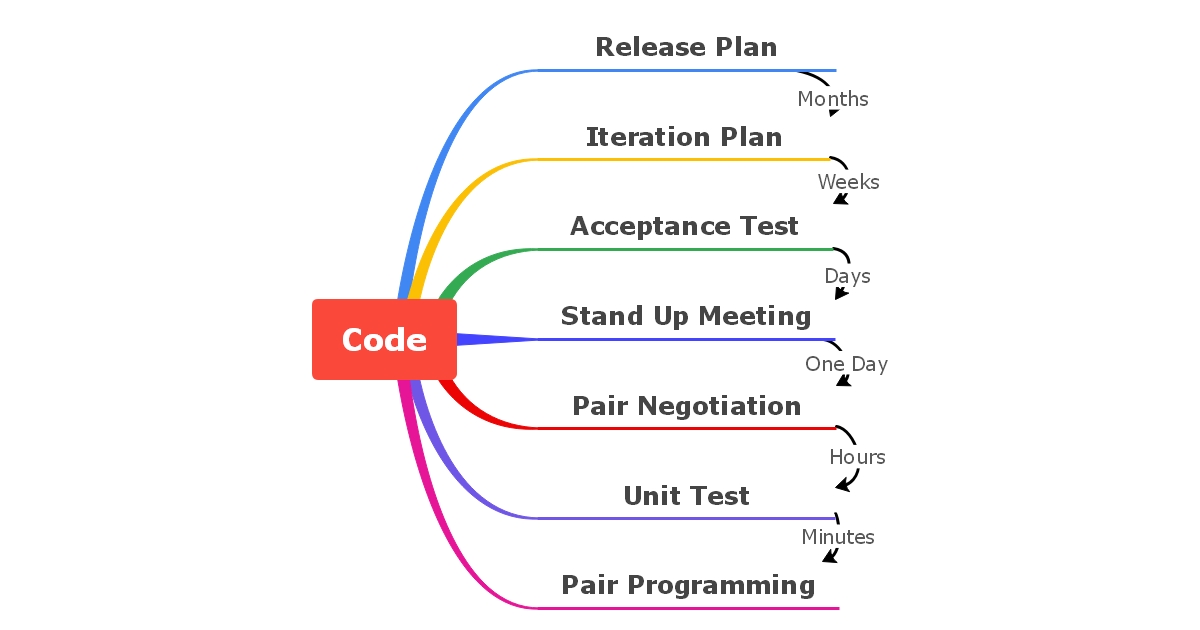
(For Win)
(For Mac)
(For Linux)
4. Key Takeaways
When working on a project that requires a faster delivery and demands that none of the resources go to waste, a business analyst or a product manager must rely on project management methodologies that follow the company's overall structure. In this elaborate guide to understanding project management methodologies, we discussed all the major methods. From the attached mind map diagrams, you must have understood which method suits your project or company.
As you saw, EdrawMind lets you create concept maps or mind maps and is also equipped to create different project management methodologies. With over 12 different structures and over 700+ stylish clip-arts, a business analyst can create a mind map to gather, analyze, and manage your product's lifecycle and show you how efficiently you can achieve them. So, what are you waiting for? Head to the download link and start creating some amazing mind maps to brainstorm your ideas organically.
You May Also Like
Health Mind Map Complete Guide With 10+ Examples
EXAMPLES & TEMPLATES
Personal Mind Map Complete Guide With 10+ Examples
EXAMPLES & TEMPLATES
Business Mind Map Complete Guide With 30+ Examples
EXAMPLES & TEMPLATES
Mind Map Ideas for Students: Explained with 30+ Examples
EXAMPLES & TEMPLATES
Biology Concept Map Complete Guide With 30+ Examples
EXAMPLES & TEMPLATES